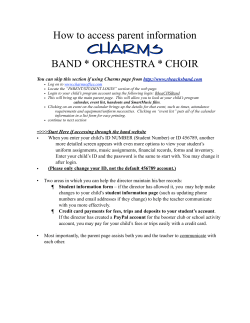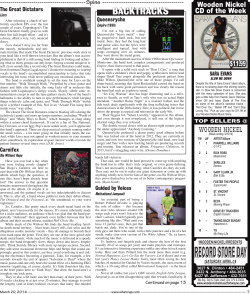
Iliotibial Band Syndrome
Iliotibial Band Syndrome Medical Author: Benjamin Wedro, MD, FACEP, FAAEM Medical Editor: William C. Shiel Jr., MD, FACP, FACR Iliotibial band syndrome facts Iliotibial band syndrome is an overuse injury of tissues of the outer thigh and knee. The iliotibial band runs along the lateral or outside aspect of the thigh and is an important structure that stabilizes the knee as it flexes and extends. Inflammation of the IT band can occur as it crosses the femoral epicondyle on the lateral side of the knee joint. Iliotibial band syndrome is an overuse injury causing pain on the outside part of the knee especially during running when the heel strikes the ground. RICE and anti-inflammatory medications are first-line treatments. Physical therapy may be helpful and, rarely, surgery is an option. Prevention is a key component and includes keeping muscles well stretched. What is iliotibial band syndrome? Iliotibial band syndrome (ITBS or IT band syndrome) is an overuse injury of the tissues located on the outer part of thigh and knee. It causes pain and tenderness in those areas, especially just above the knee joint. Iliotibial band syndrome is more common in runners and bicyclists. The iliotibial band is a thick band of tissue that begins at the iliac crest in the pelvis, runs down the outer part of the thigh, and crosses the knee to attach into the top part of the tibia or shinbone. The iliotibial (IT) band helps stabilize the knee through its range of motion. When the knee is flexed, the IT band is located behind the femoral condyle, a bony outcropping of the femur or thighbone at the knee. The IT band moves forward across the condyle when the knee is extended. There is a sac or bursa that allows the band to glide across the condyle, but should inflammation occur in the area, the increased friction from repeated rubbing of the iliotibial band against the bony condyle can cause pain, especially along the outer (lateral) aspect of the knee joint. If the symptoms are ignored, the inflammation can continue and scarring can occur in the bursa, decreasing knee range of motion and causing increasing pain with decreasing activity. What causes iliotibial band syndrome? Iliotibial band inflammation is an overuse syndrome that occurs often in long-distance runners, bicyclists, and other athletes who repeatedly squat. The iliotibial band syndrome may be the result of a combination of issues from poor training habits and poor flexibility to muscle and other mechanical imbalances in the body. Anatomy issues may include differences in the lengths of the legs (a leg-length discrepancy), an abnormal tilt to the pelvis, or bowed legs (genu varum). These situations can cause the iliotibial band to become excessively tight, leading to excess friction when the band crosses back and forth across the femoral epicondyle during activity. Runners can develop iliotibial band syndrome symptoms should they make mistakes in their training. Roads are canted or banked with the center of the road higher than the outside edge to allow for water runoff. If a runner always runs on the same side of the road, it produces the same effect on the body as having a leg-length discrepancy. One leg is always downhill compared to the other, and the pelvis has to tilt to accommodate the activity. Running too many hills can also cause inflammation of the IT band. Bicyclists may develop IT band inflammation should they have improper posture on their bike and "toe in" when they pedal. This can cause the same effect as bowed legs, increasing the angle of the IT band as it crosses the knee, increasing the risk of inflammation. Other activities with increased knee flexion can cause symptoms and include rowing and weight lifting, especially with excessive squatting. What are iliotibial band syndrome symptoms and signs? Pain on the outer side of the knee is the most common symptom of iliotibial band syndrome and is due to inflammation of the area where the band crosses back and forth at the femoral epicondyle. Initially, there may be a sensation of stinging or needle-like pricks that are often ignored. This can gradually progress to pain every time the heel strikes the ground and finally can become disabling with pain when walking or when climbing up or down steps. Some patients may feel a snapping or popping sound at the knee, and there may be some swelling either where the band crosses the femoral epicondyle or below the knee where it attaches to the tibia. Occasionally, the pain may radiate along the course of the IT band all the way up to the outer side of the thigh to the hip. How is iliotibial band syndrome diagnosed? Often, the diagnosis of iliotibial band syndrome can be made by the patient's story of symptoms. The patient describes the progression of lateral knee pain that is made worse when the heel strikes the ground. Physical examination is helpful because the area of pain can often be palpated with tenderness and swelling felt over the femoral epicondyle where the bursa or sac is located. The health care professional may also look for leg-length discrepancy and muscle imbalance in the legs and back. There is tenderness of the outer thigh just above the knee joint while the knee and hip joints are normal. Usually, a full physical examination of the low back and legs, including the hips, knees and ankles, is performed to detect other potential causes of outer knee pain. Blood tests and X-rays are usually not required. What is the treatment for iliotibial band syndrome? Iliotibial band syndrome is an overuse injury that causes inflammation. Initial treatment includes rest, ice, compression, and elevation (RICE). Anti-inflammatory medications, like ibuprofen (Advil, Motrin) and naproxen (Anaprox, Aleve), may be helpful. Please be aware that over-the-counter medications like these can have potential side effects and interactions with prescription medications and it is worthwhile asking your care provider or pharmacist whether they are safe to take. Should treatments not work, physical therapy may be needed to decrease the inflammation at the IT band. Some treatments focus on flexibility and stretching. Friction rubbing may occur over the IT band at the femoral epicondyle to break down inflammation and scarring. Therapeutic ultrasound techniques may be used, including phonopheresis (ultrasound propels anti-inflammatory medications through the skin into the inflamed tissue) and iontophoresis (electricity is used instead of ultrasound). The physical therapist may also help evaluate the underlying cause of the problem and look at muscle strength and balance and/or flexibility and gait analysis (watching a person walk or run). Shoe orthotics may be useful if there is a gait problem, pelvic tilt, or leg-length discrepancy as a potential cause of IT band syndrome. It is rare that the conservative nonsurgical treatment fails to help. However, orthopedic surgery may be an option for patients who fail conservative treatment. Arthroscopy can be used to find the inflammation surrounding the iliotibial band and cut it away. The IT band itself can also potentially be lengthened. What stretches and exercises are beneficial for iliotibial band syndrome? A. Hands are held on the waist, and the injured leg is crossed behind the good leg. B. The arm on the same side as the injured leg sweeps up and over as the hips are moved laterally toward the good side, allowing a lateral bend at the waist. There should be no twisting with this stretch and no need to touch the foot of the injured leg. What exercises should be avoided with iliotibial band syndrome? Most people want to return to their activity of choice as soon as possible, but rest is an important component of treatment. Running, cycling, squatting, and walking up or downhill can aggravate the iliotibial band and delay healing. It is important for the patient to listen to their body and try to appreciate what specific activity or range of motion causes the pain and try to avoid it if possible. What is the prognosis for iliotibial band syndrome? Can iliotibial band syndrome be prevented? Most patients recover from iliotibial band syndrome, but it can take from weeks to months to return to full activity without pain. Patience is required for optimal results. Understanding the importance of symmetry in the body is helpful in preventing iliotibial band syndrome. When activities alter that symmetry, symptoms may occur. Symptoms can occur in runners who always run in the same direction on an indoor track or who always run on the same side of a banked road. This causes an artificial tilt to the pelvis and increases the risk of developing inflammation and pain. When running indoors, it is wise to change directions when running longer distances. Some tracks have the runners change directions every few minutes while others change direction on alternate days. While running toward traffic is an important safety strategy, finding a way to run on the opposite side of the street safely may minimize the risk of developing iliotibial band syndrome. Bicyclists are at risk for iliotibial band syndrome if they tend to pedal with their toes turned in, which can cause abnormal stretching of the iliotibial band at the knee. Being aware of pedaling technique may minimize the risk of developing symptoms. Keeping muscles and other structures stretched is an important part of prevention of many musculoskeletal injuries, including iliotibial band syndrome Where can people find more information about iliotibial band syndrome? Iliotibial band syndrome is a common runner's affliction. Often a local running store will be able to provide information about the signs and symptoms of the injury, including area health care professionals who can help runners and other athletes. REFERENCES: Lavine, R. "Iliotibial Band Friction Syndrome." Curr Rev Musculoskelet Med. 3.1-4 Oct. 2010: 18-22. Strauss, E.J., et al. "Iliotibial Band Syndrome: Evaluation and Management." J Am Acad Orthop Surg. 19.12 Dec. 2011. Last Editorial Review: 4/25/2012
© Copyright 2025










